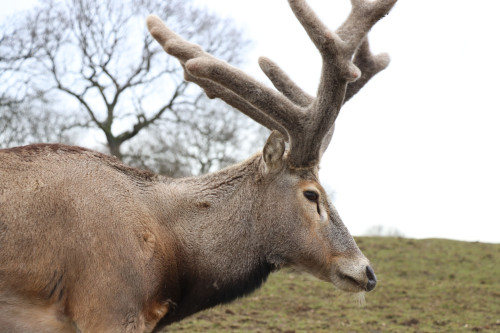Axis deer are from India and make up part of the natural diet of bengal tigers.
Axis deer are also known as spotted deer or chital
Read moreCategory: Herbivore
Location: Safari Drive
Père David’s deer were discovered in the Chinese imperial hunting park in 1865 by Père Armand David, a French missionary and explorer. Over the next few years some were sent to European zoos, which helped save the species. The flood of 1894 in China killed many of them and then during the Boxer rebellion in 1900 the herd was wiped out, when starving peasants killed them for food. The 11th Duke of Bedford saved these deer from extinction, when he collected nearly all the remaining deer that were left in Europe. He then created a very successful breeding herd in his spacious park at Woburn, near Bedford.
The first few Père David’s deer arrived at Knowsley in 1979 and started to breed successfully too. They are a very hardy species and thrive in our cold and wet winters. In 1986, 39 deer, including four from Knowsley, were sent back to their homeland in China, a project organised by the Zoological Society of London, where they have now become well established.
Like most deer species and many antelope species, Père David’s deer calves are ‘parked’ safely hidden from sight of predators and away from the rest of the herd. Mothers will check on their calves and feed them when there is no sign of being spotted by a predator.

Adult Male Pere David's Deer
Père David’s deer are classed as extinct in the wild.
They are the only type of deer to have 2 sets of antlers in one year.
They give birth to a single calf after being pregnant for 8 months. Twins have been recorded.
Père David’s deer are herbivores, they feed on grasses.
Père David’s deer originate from China. A small semi-wild population have been bred in the native homeland within a protected reserve.
Pere David Deer are now classed as Extinct in the Wild.